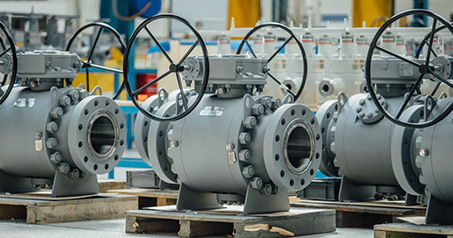नवम्बर . 27, 2024 14:41 Back to list
Types and Uses of Inside Bore Gauges for Precision Measurement in Engineering
Understanding Inside Bore Gauges The Essential Tool for Precision Measurement
In the world of manufacturing and engineering, precision is paramount. One of the key aspects of achieving this precision is the accurate measurement of internal diameters in various components. This is where the inside bore gauge comes into play. This tool is essential in a range of industries, from automotive to aerospace, where tolerances are tight and accuracy is critical.
What is an Inside Bore Gauge?
An inside bore gauge is a specialized tool designed to measure the internal diameter of a bore, such as that found in pipes, cylinders, and other hollow objects. Unlike calipers, which measure external dimensions, inside bore gauges are specifically engineered to take measurements from within a hole or a cylinder. They often come equipped with dial indicators or digital readouts, allowing for precise measurement with minimal user error.
Types of Inside Bore Gauges
There are several types of inside bore gauges available on the market, each tailored for different applications
1. Mechanically Operated Gauges These gauges rely on a physical measuring mechanism. They may include a dial indicator connected to internal measuring rods that expand and contract within the bore. The reading is taken from the dial, providing an easy-to-read measurement.
2. Digital Bore Gauges With advancements in technology, digital inside bore gauges have become popular. These devices feature electronic sensors that provide a digital readout of the internal diameter. Digital gauges are often preferred for their ease of use and increased accuracy, as they minimize the risk of human error.
3. Telescoping Gauges These gauges have a unique design that allows them to reach into deep bores. They can be adjusted to fit the diameter of the bore, and once adjusted, they are removed from the bore and measured with external measuring tools, such as calipers or micrometers.
4. Optical Gauges For industries that require extremely high precision, optical measuring systems are available. These can include laser-based technologies that measure internal dimensions without physical contact, further reducing the risk of errors and damage to the component.
How to Use an Inside Bore Gauge
insize bore gauge

Using an inside bore gauge might vary slightly based on the type, but general principles apply across most models
1. Preparation Ensure the bore is clean and free of debris. Any contaminants can affect measurement accuracy.
2. Adjustment For mechanical and telescoping gauges, adjust the gauge to match the expected internal diameter. For digital gauges, simply ensure that it is calibrated properly.
3. Insertion Carefully insert the gauge into the bore, ensuring it is straight and not tilted. This ensures that the measurement is not skewed.
4. Measurement For mechanical gauges, look at the dial indicator and record the measurement. For digital gauges, read the measurement directly from the display.
5. Repeat It is advisable to take multiple measurements at different points within the bore to ensure consistency and account for any irregularities in the internal surface.
Importance of Accuracy
The importance of using an inside bore gauge cannot be overstated. In industries such as automotive engineering, even a slight deviation in measurement can lead to significant issues, such as marital misalignment or reduced performance of components. By ensuring that the internal dimensions of parts are within specified tolerances, manufacturers can guarantee product reliability and longevity.
Moreover, accurate measurements are vital for quality control processes. Many ISO and industry standards require specific tolerances for parts, making inside bore gauges an integral part of any manufacturing operation aiming for certification.
Conclusion
In conclusion, inside bore gauges are indispensable tools for anyone involved in precision manufacturing or engineering. Their ability to accurately measure internal diameters is fundamental to ensuring quality, performance, and reliability in various applications. As technology evolves, so too do the features and capabilities of these gauges, yet their core purpose remains the same to measure with precision. Understanding how to properly select and use these tools is crucial for any professional aiming to excel in a precision-driven environment.
-
Why Metric Trapezoidal Thread is Ideal for Precision Motion ControlNewsAug.05,2025
-
The Unique Properties of a Block of Granite for Industrial UseNewsAug.05,2025
-
The Role of Flanged Y Strainers in Preventing Pipeline ClogsNewsAug.05,2025
-
The Importance of Regular Calibration for Master Ring GagesNewsAug.05,2025
-
How a Cast Iron Surface Table Enhances Accuracy in ManufacturingNewsAug.05,2025
-
Comparing Different Check Valve Types for Optimal Flow ControlNewsAug.05,2025
Related PRODUCTS









